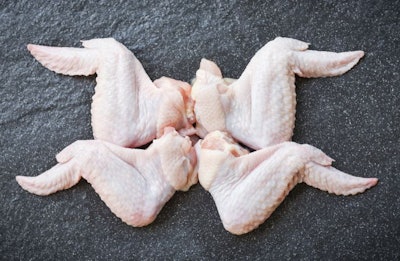
When making decisions on whether to use electrical waterbath stunning or controlled atmosphere stunning (CAS) in poultry slaughter and processing, one important consideration is which stunning method will result in a higher quality end product.
While a significant amount of comparisons between the two stunning methods have been made when examining economic benefit and various animal welfare matters, less attention has been given on the methods’ impact on the quality of the poultry product itself, explained Montana Riggs, graduate student at Auburn University.
During the International Poultry Science Forum in conjunction with the International Production & Processing Expo (IPPE) in Atlanta, Georgia, Riggs gave a presentation about such a research project she conducted with collaboration from others at Auburn University.
One aspect that the research team looked at was the impact each stunning method had on wings. In this study, 18,222 wings were observed from birds that went through electrical stunning, while 22,312 wings were observed from birds that went through CAS. The line that used electrical stunning moved at a rate of 150 birds per minute, while the CAS line moved at a rate of 175 birds per minute. The observation process for each stunning method was 65 minutes.
That study showed that 4.3% of the wings from birds where CAS was used were damaged, versus 2.4% of the wings from chickens where electrical stunning was administered were damaged.
While the types of wing injuries were not specified in the presentation, Riggs said that there were definitely more broken wing tips in a CAS system.

Montana Riggs presented findings on a study conducted at Auburn University on stunning methods and their impact on wing quality at the International Poultry Scientific Fourm. | Roy Graber
Both Riggs, and Dianna Bourassa, PhD, Auburn University extension specialist and assistant professor, acknowledged that the matter should be further researched to include more birds and multiple processing plants in order to give a more thorough evaluation of the two stunning methods’ impact on wing quality.
















